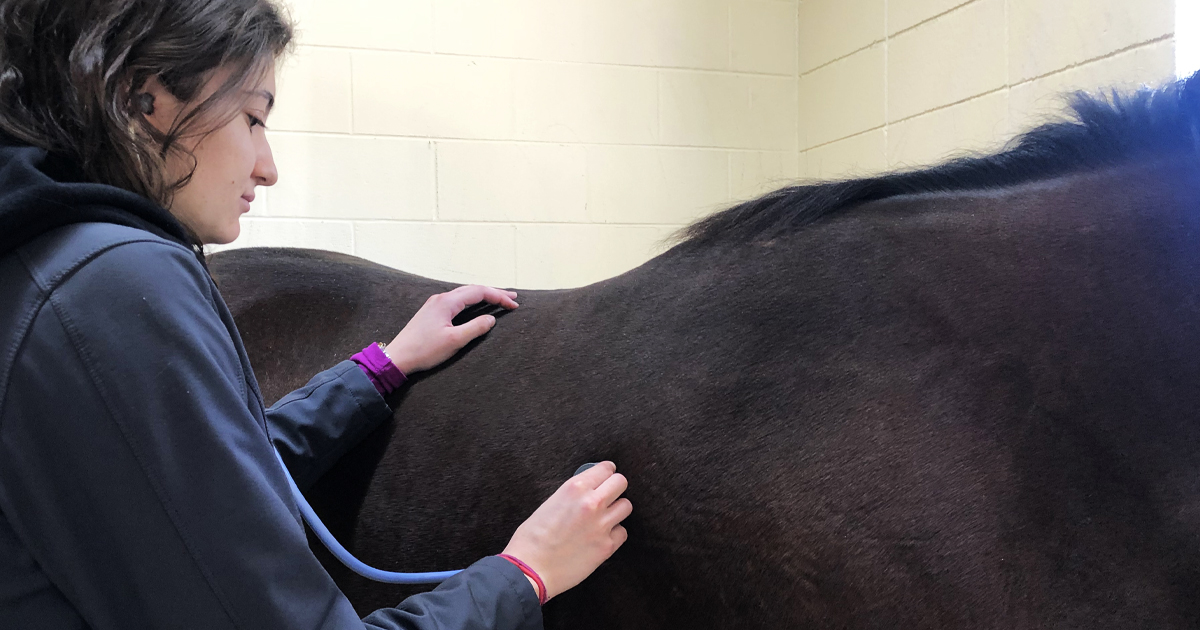Written by Dr. Natalie Khouzam
2021-2022 Peterson Smith Equine Hospital + Complete Care Hospital Intern
What is heaves?
Heaves, also known as recurrent airway obstruction, is a lower respiratory disease characterized by nasal discharge, chronic coughing and difficulty breathing. This disease is similar to asthma in people and is triggered when affected horses inhale antigens such as dust and mold spores. Exposure to these irritants causes the horse’s airways to become inflamed and spasm. Mucus and pus collect in the small airways, and over time airways become scarred and narrow. Heaves is a chronic disease and affected horses will need life-long management.
How is heaves diagnosed?

A thorough physical exam, along with understanding the horse’s history, is important in diagnosing heaves. A horse that has been chronically coughing and having difficulty breathing (especially exhaling) while at rest is likely to have heaves. Clinical signs include an increased respiratory rate and effort, flared nostrils and a heave line. A heave line occurs when the horse’s abdominal muscles become enlarged due to the hard work it takes to help the horse exhale. Another physical exam finding is hearing wheezes when listening to the horse’s lungs. A bronchoalveolar lavage (a fluid sample from the horse’s lungs) can be performed to look at the different types of cells in the horse’s lungs.
How is heaves treated?
The main treatment for heaves is environmental management. Minimizing the affected horse’s contact with dust and mold spores is very important in managing this disease. This can be done by removing hay from the horse’s environment and feeding pelleted or cubed hay. Another way to minimize the horse’s exposure to environmental irritants is to keep the horse outside 24 hours per day. This reduces exposure to hay and straw, which is where dust and mold spores reside. Some horses in the southeastern United States can exhibit signs of heaves when they are on pasture, but may improve after spending a day in a well-ventilated barn. This is called summer pasture-associated obstructive pulmonary disease. Corticosteroids and bronchodilators can also be used to treat severe cases of heaves.
What is the prognosis for a horse living with heaves?
Most horses diagnosed with heaves have a good prognosis if managed appropriately. After treatment is initiated, it may take horses approximately five days to show signs of clinical improvement. It is important to remember that heaves requires life-long management, and that exposure to antigens can cause clinical signs to recur.
References:
Orsini, James A, and Thomas J Divers. Equine Emergencies: Treatment and Procedures. 4th ed., Saunders, 2014.
Rush, B. The Merck Veterinary Manual. 9th Whitehouse Station, N.J., 2019.




